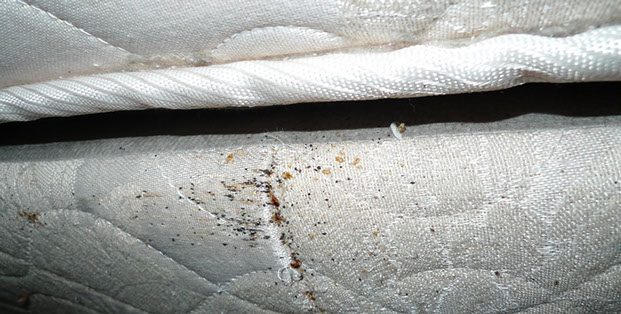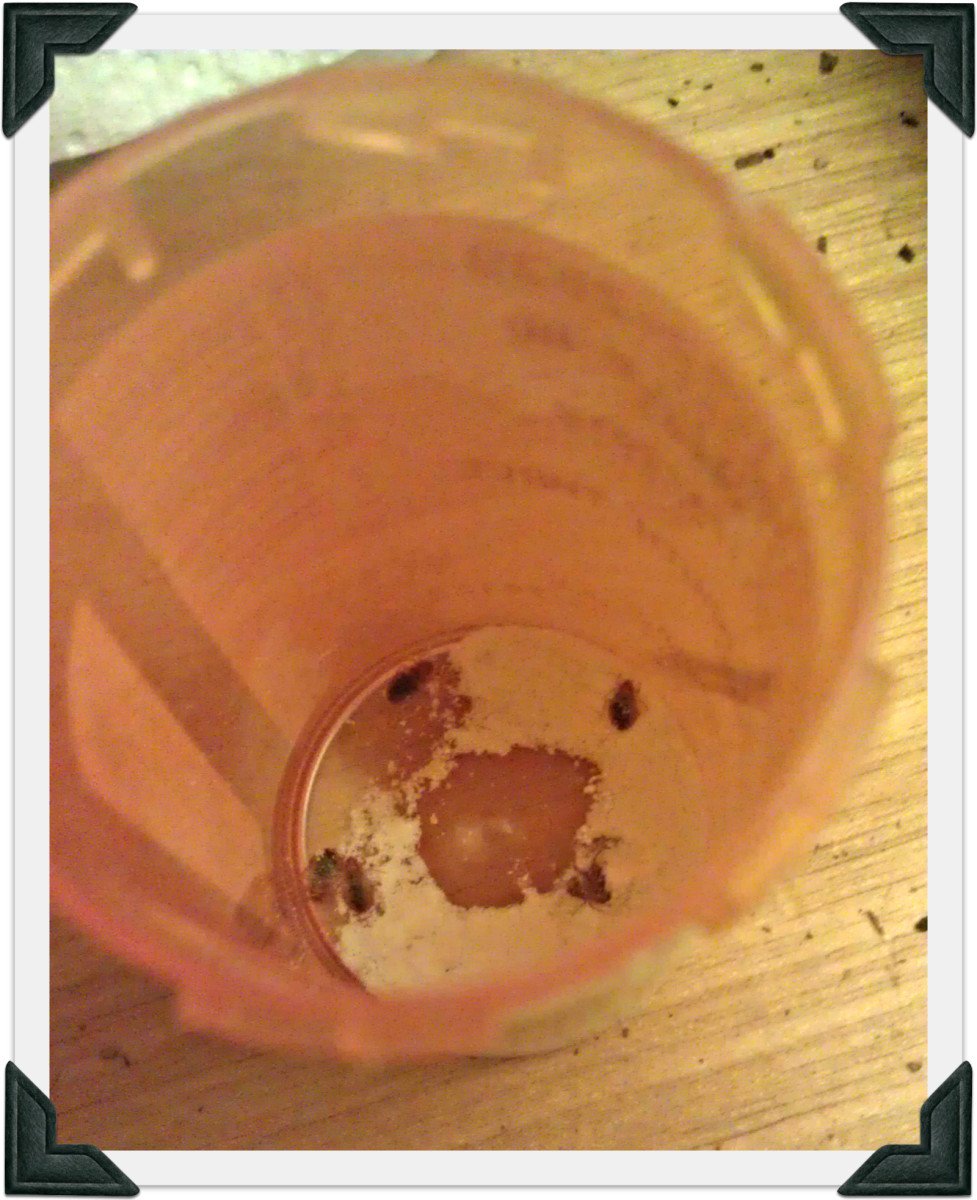To get rid of bed bugs with diatomaceous earth, sprinkle it in key areas where the bugs hide. Ensure a thorough application around bed frames, seams, and baseboards.
Bed bugs, tiny nocturnal insects that feed on blood, can turn your bedroom into a nightmare. This natural, non-toxic powder is the bane of many household pests, particularly bed bugs. Diatomaceous earth works by piercing the exoskeletons of these pests upon contact, causing them to dehydrate and die.
It is an effective, affordable, and chemical-free method of pest control that homeowners can use with relative ease and confidence. As bed bug infestations are notoriously difficult to eliminate, diatomaceous earth provides a simple yet powerful tool in the pest management arsenal. Remember, consistency and patience are key in using diatomaceous earth to successfully rid your home of these unwelcome visitors.

Credit: progressiveplanet.com
The Bed Bug Menace
The Bed Bug Menace has become a prevalent issue in various households. Tiny, elusive, and incredibly adaptable, bed bugs have mastered the art of cohabitation with humans. Their preference for warmth, carbon dioxide, and blood turns our homes into perfect havens for their proliferative activities. Battling these resilient pests often requires expertise and persistence.
Proliferation Of Bed Bugs In Homes
Bed bugs multiply rapidly, finding shelter in the tiniest of spaces. They latch onto clothes, luggage, and furniture, maneuvering through homes with ease.
- One female bed bug can lay 200 to 250 eggs in her lifetime.
- Eggs hatch within 6 to 10 days, expanding the infestation.
- Bed bugs can survive for months without feeding, making total eradication challenging.
Regular inspection and cleaning can help detect early signs of their presence, such as rust-colored spots on bedding.
Health Risks And Nuisances
Bed bugs are not just a nuisance but also pose various health risks.
| Health Risk | Details |
|---|---|
| Allergic Reactions | Bites cause skin rashes, hives, and in severe cases, anaphylaxis. |
| Sleep Disturbances | The stress of infestations leads to insomnia and anxiety. |
| Secondary Infections | Scratching bites may result in infections like impetigo and lymphangitis. |
Limiting the spread of bed bugs and addressing bites promptly is vital for maintaining health.
Identifying A Bed Bug Infestation
Waking up with itchy bites can be alarming. Knowing if these are from bed bugs is crucial before you use diatomaceous earth. Let’s identify if you have a bed bug problem.
Signs And Symptoms
- Bite marks on your skin that are red and itchy.
- Blood spots on your sheets or pillowcases.
- Darker fecal spots on your mattress or bedding.
- An unpleasant, musty odor in your bedroom.
Common Hiding Spots For Bed Bugs
Bed bugs love to hide where you rest. Here are their favorite spots:
- Mattress seams: Check for tiny black dots or live bugs.
- Box springs: Inspect inside folds and crevices.
- Bed frames and headboards: Look for hiding bugs in cracks.
- Furniture: Sofas and recliners can also host bed bugs.
- Carpets and rugs: Lift edges to find hidden bed bugs.
- Wall fixtures: Unscrew and check behind each one.
- Electrical outlets: Use a flashlight for a closer look inside.
Note: Always wear gloves when inspecting to prevent bites.
Diatomaceous Earth: An Introductory Guide
Welcome to the world of natural pest control! Understanding diatomaceous earth (DE) can revolutionize how you deal with bed bugs. Below, discover what DE is and how it terminates these tiny intruders.
What Is Diatomaceous Earth?
Diatomaceous earth sounds complex, but it’s simple. It’s a powder made from fossilized algae. These algae, or diatoms, have existed for millions of years. Ground into a fine dust, DE is a non-toxic substance to people and pets but lethal to bed bugs.
How It Works Against Pests
DE tackles pests in a unique way. The powder has microscopic sharp edges. When bed bugs crawl over DE, these edges create cuts in their exoskeletons. DE also absorbs oils and fats from the bug’s outer layer. This causes dehydration and, ultimately, death to the bugs. Listed below are reasons why DE stands out:
- Eco-friendly: It’s a natural product, causes no harm to the environment.
- Safe for home use: Non-toxic for humans and pets when used as directed.
- Easy to apply: Just sprinkle it where pests roam.
- Long-lasting effects: Continues to work as long as it’s kept dry.

Credit: dengarden.com
Preparation Steps Before Application
Welcome to the essential phase of bed bug elimination: preparation. Treating your home with Diatomaceous Earth is a powerful way to say goodbye to these unwelcome guests. To ensure the utmost effectiveness, initiating the battle against bed bugs begins with thorough prep work. Let’s get ready for a pest-free environment with key steps prior to application.
Cleaning And Decluttering
First, create a clutter-free zone. Bed bugs love hiding spots. Reducing clutter deprives them of their safe havens. Begin with:
- Removing unnecessary items from the affected area.
- Organizing belongings to minimize hiding spots.
- Thoroughly vacuuming the entire area, especially seams of mattresses, box springs, and furniture.
- Sealing collected contents firmly in a plastic bag and dispose of them immediately.
Washing Fabrics And Linens
Bed bugs cannot withstand high temperatures. Follow these steps:
- Gather all fabric materials, such as bedding, curtains, and clothing.
- Wash them in hot water at a minimum of 120°F (49°C) for 30 minutes.
- Dry on the highest heat setting for at least 30 minutes.
- Store cleaned items in sealed bags until use.
These initial actions set the stage for an effective Diatomaceous Earth treatment. They are integral to a successful bed bug eradication strategy. With cleanliness and order established, application of this natural insecticide gains maximum impact. Prepare diligently for a bed bug-free space.
Applying Diatomaceous Earth Effectively
Combating bed bugs can be a daunting task. But with diatomaceous earth (DE), a natural and effective solution is at hand. By carefully applying DE, these pesky critters can be a thing of the past. Let’s dive into how to wield this powder for maximum impact against bed bugs.
Tools Needed For Application
Before starting your DE offensive, gather the right tools:
- Diatomaceous earth food-grade powder: The star of the show, safe around pets and humans
- Protective gloves: Safety first—keep hands free from irritation
- Dust mask: Prevent inhalation of fine particles
- Applicator: This could be a duster or a shaker for precise application
Techniques For Spreading De
Applying DE the right way is crucial for success. Follow these steps:
- Prepare the area: Clear clutter and ensure surfaces are dry
- Thin layer application: Spread a fine dusting of DE across affected areas
- Focus on hotspots: Apply to bed frames, seams of mattresses, baseboards
- Use even distribution: An applicator ensures DE spreads uniformly
- Leave undisturbed: Allow DE to work for at least 24 hours before vacuuming
Remember, patience and thoroughness are key. DE may take a few days to show its full effectiveness.
Safety Precautions When Using De
Safety is paramount when using Diatomaceous Earth (DE) to combat bed bugs. This natural powder is effective in pest control but requires careful handling to prevent any health risks. Understanding the right safety measures ensures both efficacy and well-being.
Protective Gear For Handling De
Before you start, gather appropriate protective gear:
- Gloves
- Goggles
- Face mask or respirator
- Long-sleeved clothing
These items shield your skin and lungs from the fine DE particles.
Avoiding Inhalation And Contact
DE particles are small and light, making them easy to inhale. Use it in well-ventilated areas or outdoors. Keep it away from fans, windows, or any drafts that can stir it into the air. Always wash hands thoroughly after use.
| Activity | Safety Action |
|---|---|
| Preparation | Wear all protective gear |
| Application | Apply in calm, no-breeze conditions |
| Cleanup | Moisten before sweeping to avoid dust |
| Post-application | Keep area empty for a while |
DE is not toxic, but it can be a nuisance to lungs and mucous membranes. Never use it on beddings directly or where direct skin contact is likely. Follow instructions meticulously and you will safely reduce bed bug issues with DE.
Post-application Measures
The battle against bed bugs doesn’t end with just the application of Diatomaceous Earth (DE). Once you’ve applied DE to infested areas, proper post-application measures are crucial to ensure bed bugs wave the white flag. These steps not only reinforce the effectiveness of DE but also safeguard your home environment from any residual effects.
Monitoring The Infested Areas
Keeping an eye on treated spots is vital. Check these areas regularly to confirm the DE is in place and bed bugs are being terminated. Replace DE if it gets wet or disturbed. Look out for signs of lingering bed bugs, like new bites or seen bugs:
- Bed frames
- Box springs
- Headboards
- Other furniture
Use sticky traps around the bed to catch any stragglers. Record what you see in a notebook or on a digital device. This helps track progress over time.
Cleaning Up After De Application
Clean with care after DE does its job. Wait for a few days before removal to allow DE to work effectively. Don a mask to avoid inhaling DE, as it can irritate the lungs. Follow these steps:
- Vacuum up the DE carefully.
- Dispose of the vacuum contents outside, in a sealed bag.
- Wash the infested bedding and clothes in hot water.
- Dry on the highest heat setting.
For upholstered furniture and carpets, use a powerful vacuum with a HEPA filter to make sure no bed bugs or DE remains.
Remember, patience and consistency are your allies in this fight. Reapply DE as needed and maintain a vigilant eye to banish these pesky invaders for good.
Supplemental Measures To Ensure Success
Getting rid of bed bugs with diatomaceous earth requires consistency and complementary strategies. Let’s delve into what extra steps can ensure these pests don’t return. Applying diatomaceous earth is a powerful start. But to achieve the best results, consider these additional measures:
Additional Natural Remedies
Alongside diatomaceous earth, other natural approaches can support your battle against bed bugs:
- Baking soda: Spread around infested areas, it can dehydrate bed bugs.
- Essential oils: Some oils, like lavender and tea tree, deter these pests.
- Steam cleaning: High heat can kill bed bugs and their eggs on contact.
- Vacuuming: Regularly vacuum to remove bugs and eggs from cracks and crevices.
When To Consider Professional Pest Control
If natural remedies don’t fully do the trick, it may be time for expert help. Look for these signs:
- Persistent bugs: Seeing bed bugs after multiple treatments.
- Extensive infestation: Large numbers beyond home remedies’ reach.
- Allergic reactions: Bites causing severe itching or rashes.
- Stress: The situation is affecting your daily life and peace of mind.
Professional exterminators offer comprehensive solutions and can suggest the best course of action to ensure your home becomes bed bug-free.

Credit: www.pctonline.com
Frequently Asked Questions On How To Get Rid Of Bed Bugs With Diatomaceous Earth?
How Long Does It Take For Diatomaceous Earth To Kill Bed Bugs?
Diatomaceous earth typically requires 7 to 17 days to kill bed bugs after direct contact.
Can You Sleep In A Room With Diatomaceous Earth?
Yes, you can sleep in a room with diatomaceous earth if it’s applied correctly and kept away from sleeping areas to avoid inhalation.
Can I Sprinkle Diatomaceous Earth Around My House?
Yes, you can apply diatomaceous earth around your house as a natural pest control method, targeting areas where insects are likely to enter.
Can I Vacuum Up Diatomaceous Earth?
Yes, you can vacuum up diatomaceous earth, but use a filter-equipped vacuum to prevent damage to the machine and maintain air quality.
Conclusion
Using diatomaceous earth can be a highly effective method to tackle a bed bug infestation. Remember, consistency is key in applying this natural remedy. Stay vigilant with your application routine and maintain cleanliness throughout the process. By following the steps outlined in this post, you are all set to reclaim your bug-free living space with confidence.

I’m MD Tanvir, and I bring years of expertise gained from working closely with pest control companies to the forefront. My journey in the industry has inspired me to launch Bug Battler, a platform aimed at equipping people with the know-how to combat pests autonomously. Through Bug Battler, I aim to empower individuals with practical insights to tackle pest infestations effectively.

